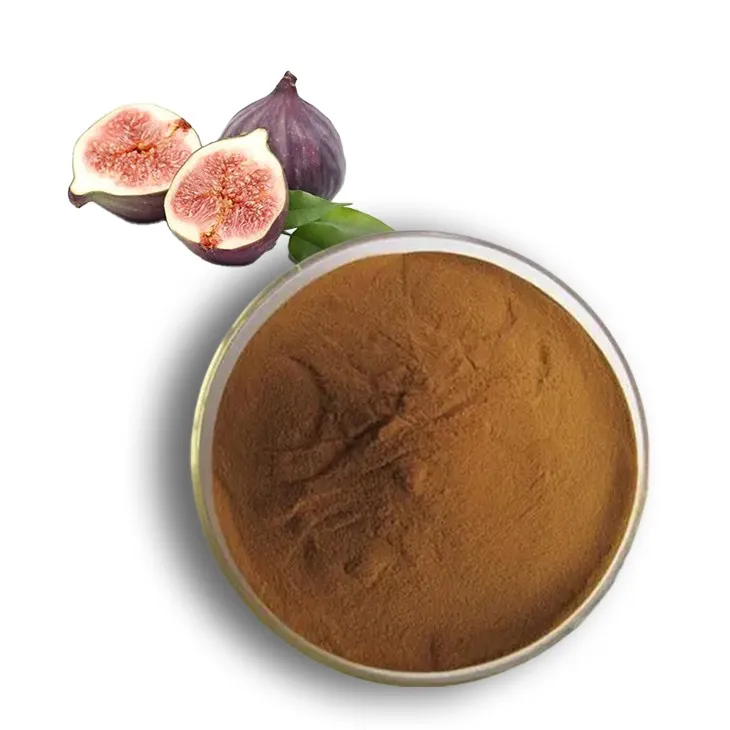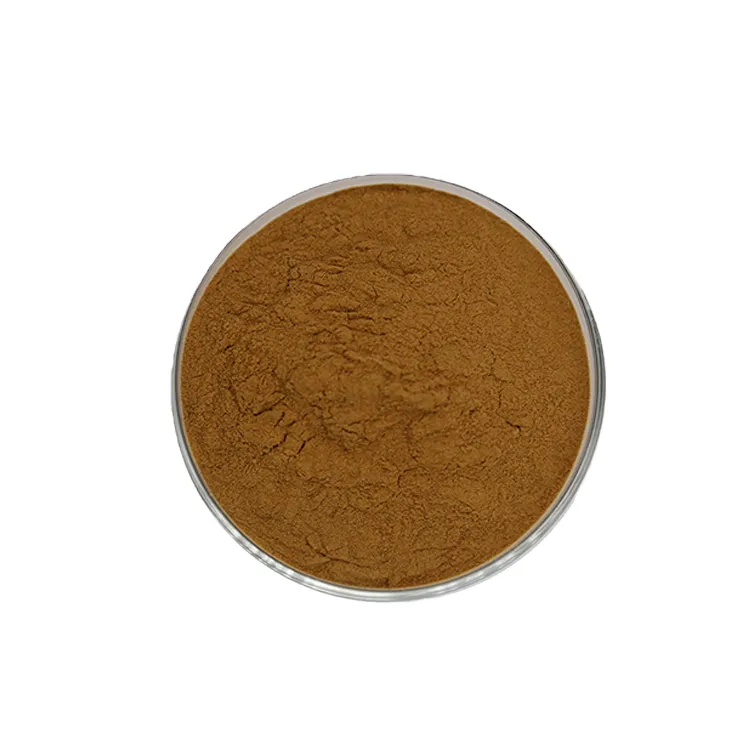- 0086-571-85302990
- sales@greenskybio.com
How to Extract Fig Extract from Plants.
2024-11-29

1. Introduction
Fig Extract has gained significant popularity and demand in various fields such as the food industry, cosmetics, and pharmaceuticals. Figs, being rich in bioactive compounds, offer a wide range of potential applications. However, the extraction process is crucial to obtain a high - quality Fig Extract with desirable properties. The type of fig plant, its growth environment, and the extraction method employed all play vital roles in determining the final extract's composition and quality.

2. Factors Affecting Fig Extract Quality
2.1 Fig Variety
Different fig varieties possess distinct chemical compositions. Some varieties may have a higher content of certain bioactive compounds such as phenolic acids, flavonoids, or vitamins. For example, the Smyrna fig variety is known for its rich flavor and potentially higher levels of certain antioxidants compared to other varieties. When aiming for a specific type of fig extract, choosing the appropriate fig variety is of utmost importance.
2.2 Growth Conditions
- The soil quality in which figs are grown can impact their nutrient content. Figs grown in nutrient - rich soil are likely to have a higher concentration of beneficial compounds.
- Climate also plays a role. Adequate sunlight exposure and temperature ranges during the growth period can influence the biosynthesis of various metabolites in figs. For instance, figs grown in regions with a warm and sunny climate may produce more sugars and flavor - enhancing compounds.
- Water availability is another factor. Insufficient or excessive watering can affect the overall health of the fig plant and subsequently the quality of the extract. Proper irrigation management is necessary to ensure optimal growth and compound accumulation.

3. Extraction Methods
3.1 Soxhlet Extraction
- Principle: Soxhlet extraction is based on the principle of continuous extraction. The sample, in this case, fig plant material, is placed in a thimble inside the Soxhlet apparatus. A solvent, usually an organic solvent like ethanol or hexane, is then continuously circulated through the sample. The solvent extracts the soluble components from the fig material as it repeatedly passes through.
- Procedure:
- First, the fig plant material needs to be dried and ground into a fine powder. This increases the surface area available for extraction.
- The Soxhlet apparatus is assembled with the thimble containing the fig powder and the appropriate solvent reservoir filled. The solvent is then heated, and it vaporizes, rises through a condenser, and drips back onto the sample in the thimble. This cycle is repeated continuously for a specific period, typically several hours to days, depending on the nature of the sample and the desired extraction efficiency.
- After the extraction process, the solvent containing the extracted components is collected and evaporated to obtain the fig extract. This can be done using a rotary evaporator under reduced pressure to prevent degradation of the heat - sensitive components.
- Advantages:
- It provides a relatively complete extraction of the components present in the figs. Since the solvent continuously interacts with the sample, it can extract a wide range of compounds, including those that are less soluble and more difficult to extract using other methods.
- The process is highly reproducible, making it suitable for research and industrial - scale production where consistent product quality is required.
- Disadvantages:
- It is a time - consuming process, especially when dealing with large quantities of samples or complex matrices. The long extraction times can also lead to degradation of some heat - sensitive compounds if not carefully controlled.
- The use of organic solvents poses environmental and safety concerns. Disposal of the used solvents needs to be properly managed to comply with environmental regulations.
3.2 Ultrasonic - Assisted Extraction
- Principle: Ultrasonic - assisted extraction utilizes ultrasonic waves to enhance the extraction process. The ultrasonic waves create cavitation bubbles in the solvent. When these bubbles collapse, they generate high - intensity shock waves and micro - jets that can disrupt the cell walls of the fig plant material. This disruption increases the mass transfer of the components from the inside of the cells to the solvent, thereby improving the extraction rate.
- Procedure:
- Similar to Soxhlet extraction, the fig plant material is first dried and ground. The ground material is then placed in a container along with the extraction solvent.
- An ultrasonic probe or ultrasonic bath is used to apply the ultrasonic waves to the sample - solvent mixture. The frequency and power of the ultrasonic waves, as well as the extraction time, need to be optimized depending on the nature of the fig material and the desired extraction efficiency. Typically, extraction times range from 15 minutes to a few hours.
- After the extraction, the mixture is filtered to separate the solid plant material from the solvent containing the fig extract. The solvent can then be evaporated to obtain the final extract, again using methods like rotary evaporation.
- Advantages:
- It significantly shortens the extraction time compared to traditional extraction methods like Soxhlet extraction. This is beneficial for large - scale production as it can increase productivity.
- The use of ultrasonic waves can enhance the extraction of heat - sensitive compounds as the extraction process occurs at relatively lower temperatures compared to Soxhlet extraction. This helps in maintaining the integrity of the bioactive compounds.
- Disadvantages:
- The extraction efficiency may not be as complete as that of Soxhlet extraction for some highly complex matrices. The ultrasonic waves may not be able to disrupt all cell types and extract all the components effectively.
- Optimizing the extraction parameters such as ultrasonic frequency, power, and extraction time can be a complex task and may require prior experimentation for different fig varieties and sample matrices.

4. Other Potential Extraction Methods
- Microwave - Assisted Extraction: This method uses microwave energy to heat the solvent and the fig plant material. The rapid heating can cause internal pressure build - up within the plant cells, leading to cell rupture and enhanced extraction. However, it requires careful control of microwave power and time to avoid over - heating and degradation of the components.
- Supercritical Fluid Extraction: Supercritical fluids, such as supercritical carbon dioxide, can be used as extraction solvents. Supercritical fluids have properties between those of a gas and a liquid, allowing for better penetration and extraction of components. This method is considered more environmentally friendly as carbon dioxide is a non - toxic and easily removable solvent. However, it requires specialized equipment and high - pressure conditions, which can be costly.
5. Conclusion
Extracting fig extract from plants is a multi - faceted process that depends on various factors. The choice of fig variety and understanding of its growth conditions are essential for obtaining a high - quality extract. Among the extraction methods, Soxhlet extraction and ultrasonic - assisted extraction are the most commonly used, each with its own set of advantages and disadvantages. Other methods such as microwave - assisted extraction and supercritical fluid extraction also show potential but may have limitations in terms of cost and complexity. Future research may focus on optimizing existing extraction methods or developing new, more efficient and environmentally friendly techniques to meet the growing demand for fig extract in different industries.
FAQ:
What factors affect the quality of fig extract?
The quality of figs, such as their variety and growth conditions, affects the quality of the fig extract. Different varieties may have different chemical compositions, and good growth conditions can ensure that figs contain more beneficial substances for extraction.
What is Soxhlet extraction?
Soxhlet extraction is a well - known extraction method. It is characterized by a continuous extraction process. This process can ensure that the components in the figs are relatively completely extracted, which is very effective for obtaining fig extract.
How does ultrasonic - assisted extraction work?
Ultrasonic - assisted extraction uses ultrasonic waves to break cell walls. By breaking the cell walls of figs, it becomes easier to extract the substances inside, thus enhancing the extraction rate of fig extract.
Which extraction method is more suitable for beginners?
It depends on the available equipment and the level of understanding of the extraction process. Soxhlet extraction may be relatively easier to understand in terms of the principle, but it may require more complex equipment. Ultrasonic - assisted extraction may require some knowledge about ultrasonic devices. However, both methods need certain safety precautions and experimental skills.
Can the extraction method be combined?
Yes, in some cases, the extraction methods can be combined. For example, using ultrasonic - assisted extraction first to break the cell walls quickly, and then using Soxhlet extraction to ensure a more complete extraction. This combination may be able to obtain fig extract with better quality and higher yield.
Related literature
- Advanced Techniques for Plant Extract Extraction"
- "The Science behind Fig - Based Extracts"
- "Optimizing Extraction Processes of Natural Products from Figs"
- ▶ Hesperidin
- ▶ citrus bioflavonoids
- ▶ plant extract
- ▶ lycopene
- ▶ Diosmin
- ▶ Grape seed extract
- ▶ Sea buckthorn Juice Powder
- ▶ Beetroot powder
- ▶ Hops Extract
- ▶ Artichoke Extract
- ▶ Reishi mushroom extract
- ▶ Astaxanthin
- ▶ Green Tea Extract
- ▶ Curcumin Extract
- ▶ Horse Chestnut Extract
- ▶ Other Problems
- ▶ Boswellia Serrata Extract
- ▶ Resveratrol Extract
- ▶ Marigold Extract
- ▶ Grape Leaf Extract
- ▶ blog3
- ▶ blog4
-
100% Organic Calendula Extract.
2024-11-29
-
Wholesale Mulberry Leaf Extract Suppliers.
2024-11-29
-
China Aguaje Extract Powder Factory.
2024-11-29
-
Mulberry Extract Suppliers.
2024-11-29
-
Active components in aguaje extract.
2024-11-29
-
Standard - process cocoa extract.
2024-11-29
-
Organic Saw Palmetto Extract Powder Factory.
2024-11-29
-
Green coffee bean Extract
2024-11-29
-
Buckthorn bark extract
2024-11-29
-
Lemon Extract
2024-11-29
-
Moringa powder
2024-11-29
-
Phellodendron Extract
2024-11-29
-
Uridine-5'-monophosphate Disodium salt
2024-11-29
-
Chia Seed Powder
2024-11-29
-
Giant Knotweed Extract
2024-11-29
-
Almond Extract Powder
2024-11-29
-
Red Vine Extract
2024-11-29





















